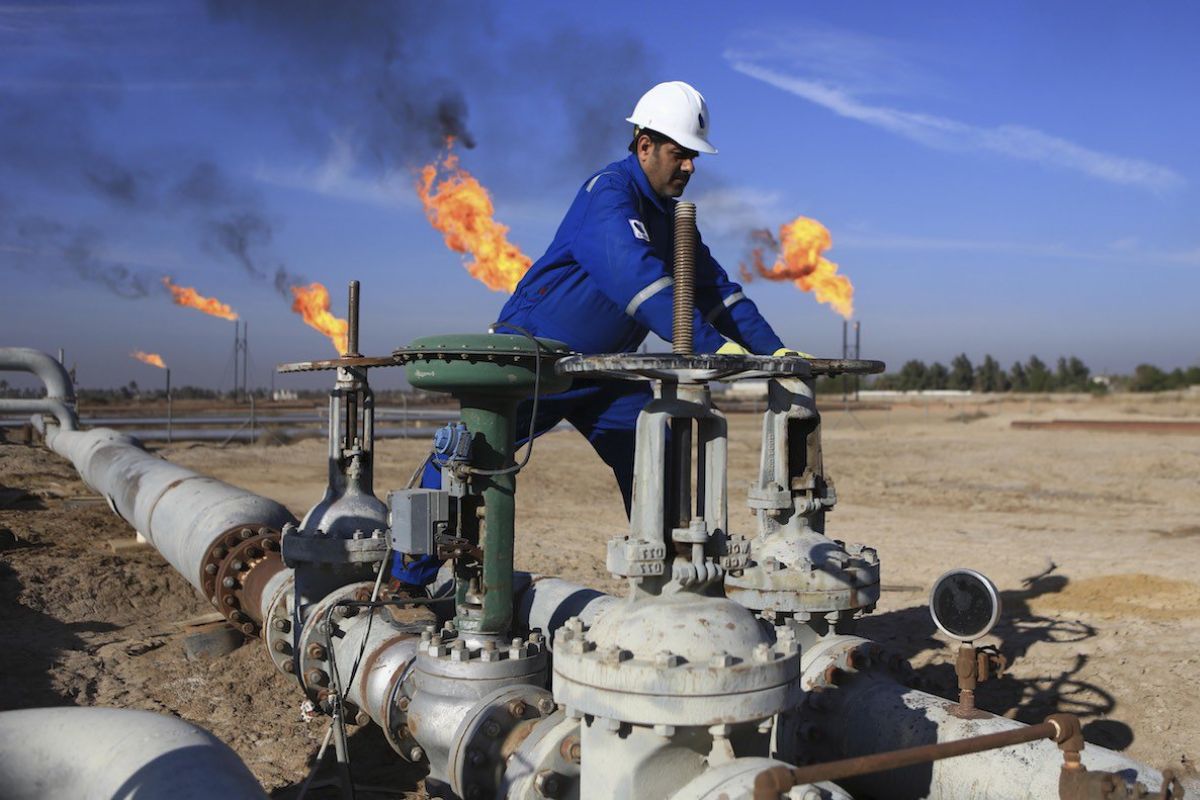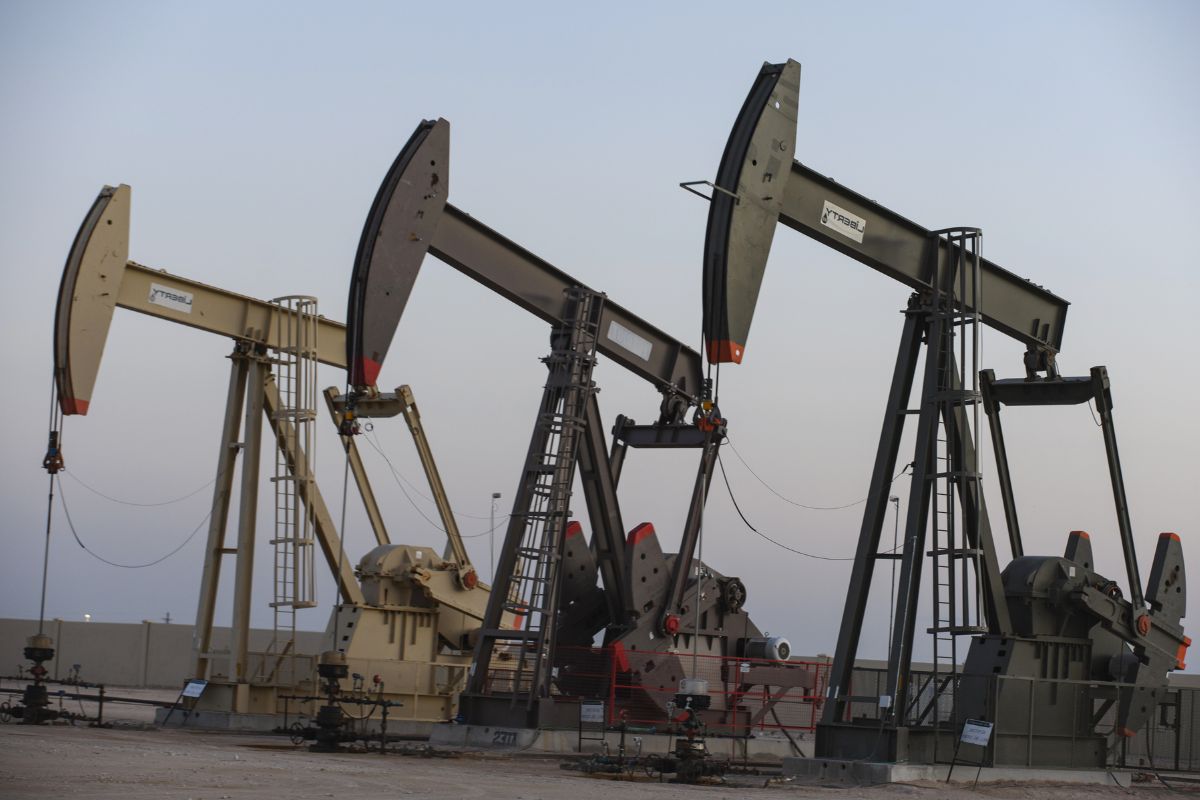Oil Prices Edge Up: The recent uptick in oil prices, with a 1% increase, is an intriguing development in the global energy market. This rise can be attributed to two significant factors: the unexpected withdrawal of US crude stockpiles and the hopes surrounding China’s economic stimulus measures.
The sudden drop in US crude inventories indicates a potential tightening of supply, which has bolstered market sentiment. Additionally, China’s efforts to boost its economy through stimulus measures have ignited hopes of increased oil demand.
However, these factors alone do not provide a complete picture of the complex dynamics influencing oil prices. Geopolitical tensions in the Middle East, global market factors, and the weakening US dollar also play pivotal roles in shaping the future trajectory of oil prices.
With these factors in mind, it becomes crucial to exercise caution and recognize the potential for additional catalysts that can impact the energy market.
Key Takeaways
- U.S. crude stockpiles have experienced an unexpected decline, surpassing industry expectations.
- Severe winter weather conditions and the Arctic freeze have caused a significant drop in U.S. crude output, impacting refineries and reducing production capacity.
- China’s economic stimulus measures, including a $140 billion injection into the banking system and support for struggling real estate firms, have positively influenced key sectors of the economy and have a profound impact on oil prices.
- Geopolitical tensions in the Middle East, particularly the escalating tensions between the United States and Iran, along with ongoing conflicts in Yemen and Iraq, raise concerns and increase the risk premiums for oil supply disruptions from the region.
Unexpected Drop in U.S. Crude Stockpiles
The surprising decline in U.S. crude stockpiles, exceeding industry expectations, can be attributed to a combination of severe winter weather conditions, disruptions caused by an Arctic freeze, and reduced road travel due to the ongoing pandemic.
Also Read: Oil Prices Edge Down as Demand Weakens and Dollar Strengthens
These factors have created a perfect storm, disrupting the normal flow of crude oil within the country. The severe winter weather conditions have impacted refineries, leading to reduced production and refining capacity. Additionally, the Arctic freeze has further exacerbated the situation, causing a significant drop in U.S. crude output.
Furthermore, the reduced road travel due to the pandemic has resulted in a decrease in U.S. crude imports, further contributing to the decline in stockpiles.
This unexpected drop in U.S. crude stockpiles highlights the vulnerability of the oil industry to external factors and emphasizes the need for greater resilience and adaptability in the face of such challenges.
China’s Economic Stimulus Impact
Amidst the unexpected drop in U.S. crude stockpiles, China’s economic stimulus measures have emerged as a pivotal factor influencing the current state of oil markets.
The recent announcement by China’s central bank of a substantial cut to bank reserves, injecting about $140 billion into the banking system, has injected optimism into the market. This move is seen as a lifeline for China’s fragile economy and declining stock markets.
Furthermore, the expansion of uses for commercial property lending by banks to alleviate liquidity challenges faced by struggling real estate firms is another significant aspect of China’s stimulus measures. These measures not only provide much-needed support to key sectors of the economy but also signal China’s commitment to maintaining stability and growth.
As China plays a crucial role in global oil demand, any positive developments in its economy have a profound impact on oil prices.
Geopolitical Tensions in the Middle East
Geopolitical tensions in the Middle East are exerting significant influence on oil prices. Recent events in the region serve as a reminder of the fragile balance between supply and demand. The escalating tensions between the United States and Iran, as well as the ongoing conflicts in Yemen and Iraq, have heightened concerns over potential disruptions to oil supply from the region.
These concerns have led to increased risk premiums being factored into the market, pushing prices higher. However, it is important to note that while these tensions have played a role in boosting oil prices, a more concrete catalyst is needed for sustained upward momentum.
As geopolitical tensions continue to simmer, market participants will closely monitor developments in the Middle East for any potential impact on oil supply and prices.
Global Market Factors and Weakening U.S. Dollar
The interconnected nature of global market factors and the weakening U.S. dollar has brought about a significant impact on oil prices. The recent 1% increase in oil prices can be attributed to a decline in U.S. crude output, Chinese economic stimulus, and geopolitical tensions.
However, the weakening U.S. dollar has played a crucial role in driving up oil prices. As the dollar loses its strength, crude oil becomes more affordable for buyers using alternative currencies. This depreciation of the dollar has provided bullish momentum to oil prices.
Investors seeking to hedge against the weakening dollar are turning to commodities like oil, driving up demand and subsequently increasing prices. The global market factors, combined with the weakening U.S. dollar, have created a favorable environment for higher oil prices.
Market Caution and Recognition of Additional Catalysts
Despite the recent increase in oil prices driven by various factors, market participants remain cautious and recognize the need for additional catalysts to sustain upward momentum in the oil market.
While the unexpected U.S. crude stockpile reduction, China’s economic stimulus, geopolitical tensions, and a weaker U.S. dollar have all played a role in pushing prices higher, there is a sense of wariness among investors. They understand that these factors alone may not be sufficient to maintain the positive trajectory in oil prices.
Clarity is needed in terms of signals for continued growth. Market participants are eagerly awaiting more concrete indications of sustained demand recovery, progress in global vaccination efforts, and resolution of geopolitical conflicts.
Until then, caution prevails, as the oil market remains vulnerable to any negative developments that could reverse the gains made so far.
Conclusion Of Oil Prices Edge Up
The recent rise in oil prices can be attributed to a combination of factors. These factors include the unexpected drop in U.S. crude stockpiles, hopes of China’s economic stimulus, geopolitical tensions in the Middle East, and global market factors.
Additionally, the weakening of the U.S. dollar has also played a role in the increase. While these catalysts have driven oil prices up, market caution and recognition of additional factors should not be overlooked.
Our Reader’s Queries
Q1 Will an increase in oil prices help or hurt the US economy?
A Elevated oil prices can stimulate job growth and attract investments by rendering economically feasible the extraction of higher-cost shale oil deposits by oil companies. Nevertheless, the flip side of high oil prices is the impact on businesses and consumers, imposing increased expenses for transportation and manufacturing.
Q2 What is the biggest impact on oil prices?
A Although global economic expansion significantly influences oil prices, the interplay of supply dynamics, shaped by political events and advancements in crude extraction and alternative energy sources, is equally crucial in shaping the oil market. FXSSI. “Top 10 Most Traded Commodities in the World.
Q3 What are the effects of oil prices increasing?
A Elevated oil prices contribute to inflation both directly and by raising input costs. A robust correlation between inflation and oil prices was evident in the 1970s. However, oil’s capacity to fuel inflation has diminished as the U.S. economy has reduced its dependency on it.
Q4 What is the impact of rising oil prices on US inflation?
A Increased oil prices elevate production and transportation costs across the economy, leading to subsequent pass-throughs to food and core prices. The surge in energy prices can also heighten consumer and business expectations for future inflation, indirectly influencing current food and core prices.




